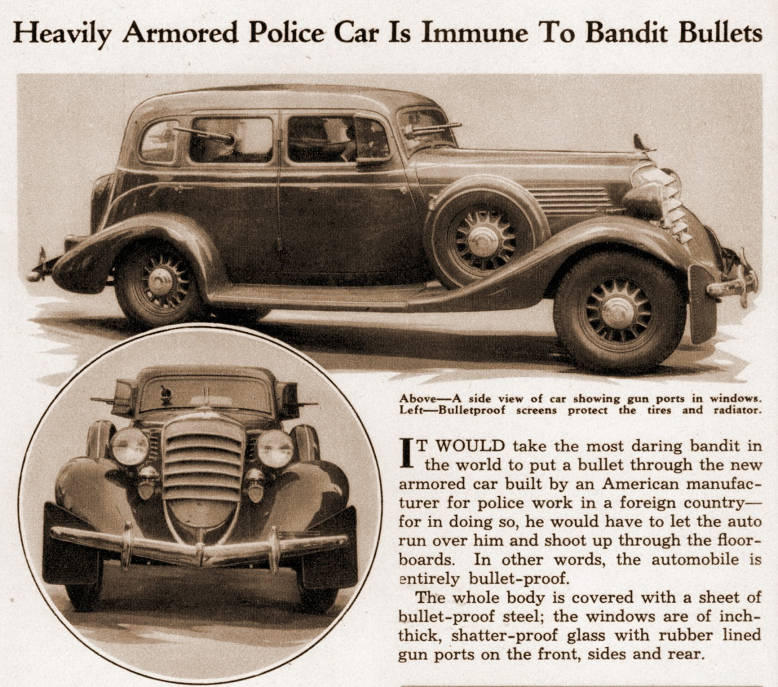Heavily Armored Police Car Is Immune To Bandit Bullets. Modern Mechanix, May, 1935

Pulp Action from the Wild West through the Dirty 30s and More.
SAFE from bomb attacks, free from disease and changing temperatures, living in cities a mile beneath the surface of the earth, such is the dream of science for the man of the future, a not impractical dream which may doom the towers of Manhattan and every other large city to destruction… (Modern Mechanix, July, 1934)
Tank Maneuvers Controlled by Radio
Developments in the mechanization of the army is the installation of radios in tanks for the transmission and receipt of orders. Control of tanks in action, since they were first introduced by the British during the World war, has been at once an important and difficult task, hitherto performed by officers who walked beside the tank and signaled with flags—a duty both dangerous and unsatisfactory. Modern tanks are now being equipped with radio, the company and section commanders having both receiving and short-wave transmitting sets, while the other tanks are only equipped to receive. The illustration shows a tank company advancing to clear the way for the infantry. The tank in the foreground is cut away to show the driver and the company commander seated in the turret. The commander has spotted the camouflaged pillbox in the left foreground and is sending an order by radio to the tank on his right to turn and smash the emplacement. Tanks shown here are armed with machine guns, other types are equipped with small cannon. (Modern Mechanix Dec, 1930)
Iron Whale Swims Ocean Bottom Like Fish
Denizens in the ocean depths may soon find prowling among their haunts a huge iron monster swimming with fishlike motions and bearing a close resemblance to themselves. This strange monster is to be built from plans devised by Herr Schiff, a German engineer, who has already constructed a workable model for his astounding brainchild, which is shown in accompanying photos. The curious undersea craft is equipped with two fins and a tail which operate in the same manner as do these elements of a live fish. Intended chiefly for the exploration of the ocean bottom, the ship is said to be capable of maneuvering with all the flexibility of its fleshy prototype. Two electric eyes placed in the head for observation purposes make the resemblance to a sea serpent more complete. The craft was designed and constructed after an extensive study of the swimming motions of many types of fish, particularly the larger sharks and whales. (Illustration by Norman Saunders)
An invention by french engineer Lehaitre he called the Tractorcycle